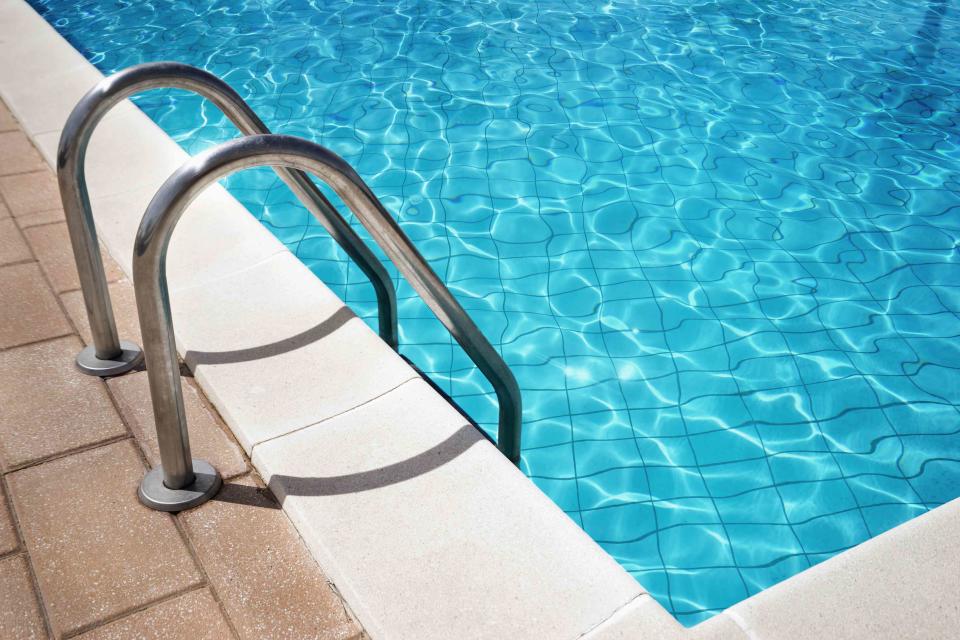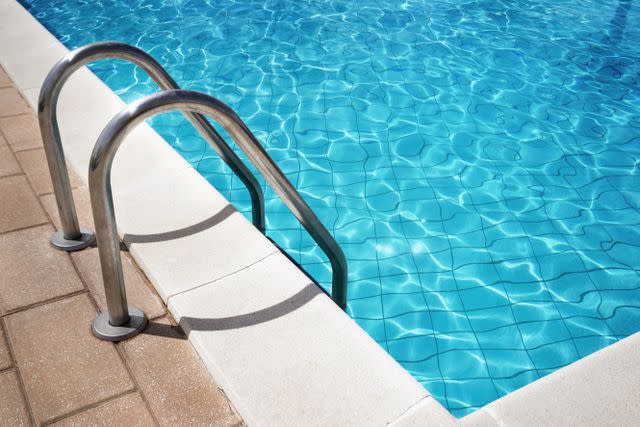What Is Pool Coping? 4 Types to Know
What exactly is pool coping, and is it really necessary? Here’s all you need to know about this very important part of your pool's anatomy.

Cavan Images / Robert Niedring / Getty Images
If you're planning to build a pool or renovate one, you may have come across the term "pool coping." It is an integral part of in-ground pool construction. Essentially, it is the edge around the pool perimeter. It doesn’t just add to the overall aesthetic, but it also serves as a protective barrier between the pool and its surroundings—like the yard, pool house, and external drains. With a wide range of materials and styles available, you can find the perfect pool coping to complement your design vision and budget. Here are the basics on the various types, materials available, and the costs of installation.

Cavan Images / Robert Niedring / Getty Images
What Is Pool Coping, And What Purpose Does It Serve?
Pool coping is the cap or edging that surrounds the top perimeter of a swimming pool. It’s the area you sit on, dive from, or stand on at the pool’s edge. Coping can be straight or curved. It is available in a wide range of materials, like concrete to sandstone. There are also different types to choose from, such as bullnose or top mount.
The coping rounds off the pool, providing a finished look and a smooth transition between the pool edge and the surrounding deck or patio. It is designed to cover the concrete and metal bond beam, i.e., the horizontal support structure around a pool’s perimeter. Proper coping installation creates an outwardly tilted barrier that causes any overflow from the pool to go down into the deck drains. It also acts as a barrier to prevent water from seeping into the pool, protecting the pool shell from damage by exposure to the elements. Its purpose is also to improve ease of pool entry and exit.
Related: 6 Swimming Pool Styles to Consider Before Breaking Ground
What Are Pool Coping Materials?
Coping materials are meant to complement the pool design, suit your personal style, and withstand outdoor climate conditions. Regular cleaning and sealing of the coping will help prolong its lifespan and maintain its appearance. Some of the most popular options are:
Concrete Coping
Concrete coping is a classic. It is easy to install and budget-friendly. It can be poured on-site or precast. It is available in a wide range of textures, colors, shapes, or styles.
Natural Stone Coping
Natural stone coping, such as travertine, marble, or sandstone, is renowned for durability, resistance to extreme temperatures, and natural beauty. Each kind of stone has its advantages. Travertine is slip resistant and cooler than the other stones. In terms of design, marble adds an elegant, luxurious touch, but can be slippery. Sandstone has its own rustic charm but, practically speaking, it can be cut into various shapes or cuts. This stone is perfect for complicated pool shapes or those with multiple compartments.
Brick Coping
Brick coping is slip-resistant and low maintenance. It is available in a range of colors and sizes, allowing you to create a traditional or contemporary design. You could choose natural clay bricks or brick pavers.
What Are The Different Types Of Coping?
There are several different types of pool coping to consider when planning your design.
Bullnose Coping
Bullnose coping is made from pavers placed around the pool. They have a more rounded edge on one side for grip. It provides a smooth, safe, and visually appealing transition between the pool and the deck.
Cantilever Edge Coping
Cantilever coping extends slightly over the pool's edge, creating a seamless and modern appearance. It is usually made of concrete.
Flat Mount Coping
Flat mount coping is flush with the pool's edge, offering a clean and minimalist aesthetic. This mounting is common with infinity pools.
Top Mount Coping
Top mount coping sits on top of the pool's edge, creating a clean and straightforward look. It is often used with concrete or vinyl-lined pools.
Related: 35 Pool Deck Ideas for the Ultimate Backyard Summer Retreat
What Is The Average Cost Of Pool Coping?
The cost of pool coping can vary depending on many complex factors, such as the chosen material, the intricacy of design, and labor costs. Average costs can start from as low as $5 and climb to $60 per square foot. Concrete is the most affordable and stone is typically the most expensive. But labor costs vary widely by company and location. To get a clear understanding of the estimated expenses for your specific project, request multiple quotes from reputable contractors working in your zip code. Be sure to request an itemization, with the cost of materials separate from the cost of installation.
How Is Pool Coping Installed?
Pool coping can also vary by installation methods. Some coping styles require mortar or adhesive, while others feature a tongue-and-groove system or interlocking design. You will need a professional to secure a sound installation process.
First, the installer will prepare the pool area by cleaning and leveling the deck surface. Then, the coping is carefully measured and marked to ensure accurate placement and alignment. After adhesive or mortar has been applied to the pool's edge to secure the coping, the coping pieces are affixed onto the adhesive for a level and consistent appearance. Last, the joints between coping pieces are filled and sealed, providing a polished look, and preventing water penetration.
When selecting pool coping, consider a material with slip-resistant properties. This is especially important if you have young children, are elderly, or anticipate high foot traffic around the pool area. Opting for a textured or non-slip surface can greatly enhance safety and reduce the risk of accidents caused by slippery conditions.
Prioritize safety alongside aesthetics to ensure a pool coping choice that provides both beauty and peace of mind for you and your loved ones.
For more Better Homes & Gardens news, make sure to sign up for our newsletter!
Read the original article on Better Homes & Gardens.

